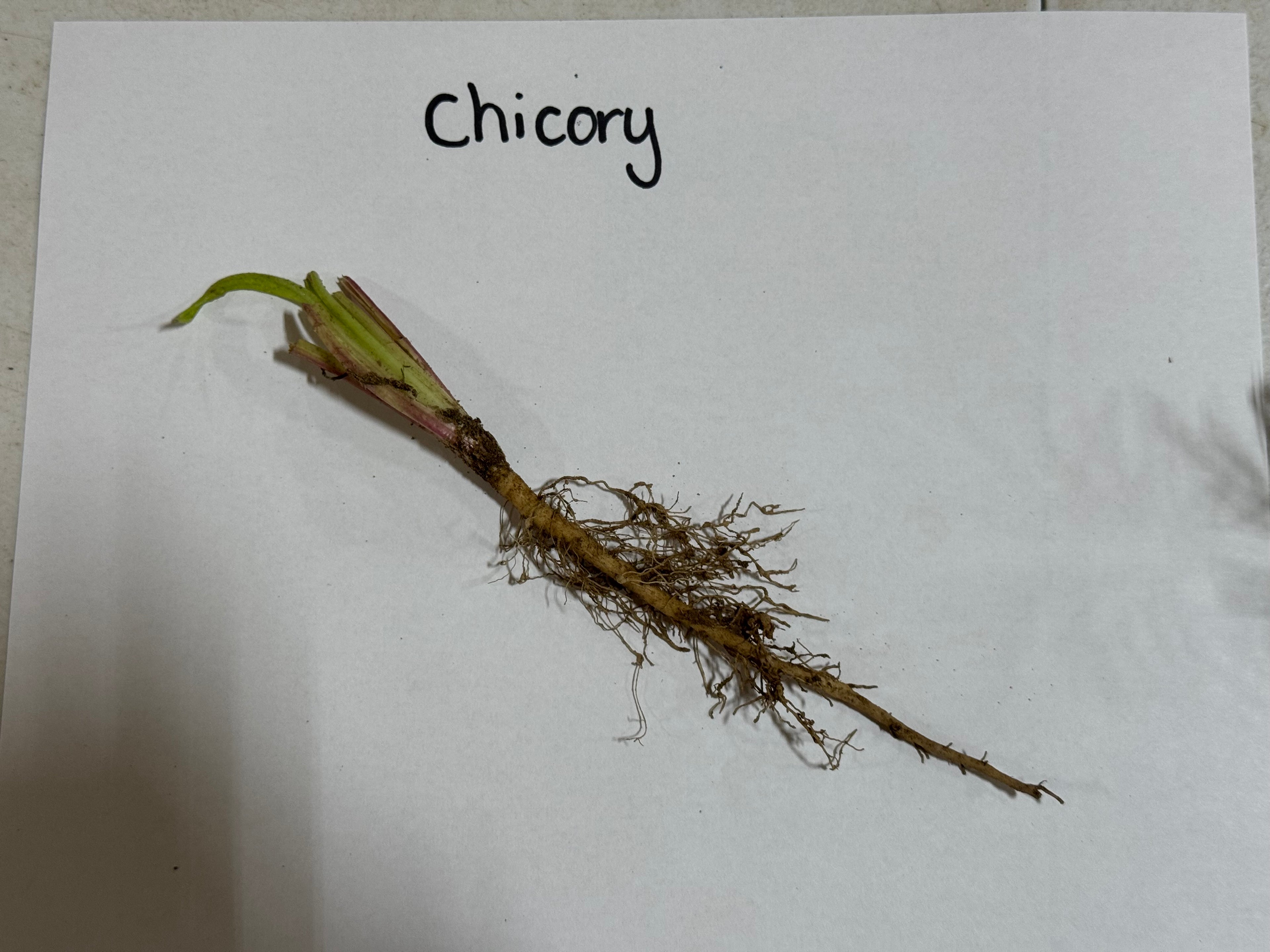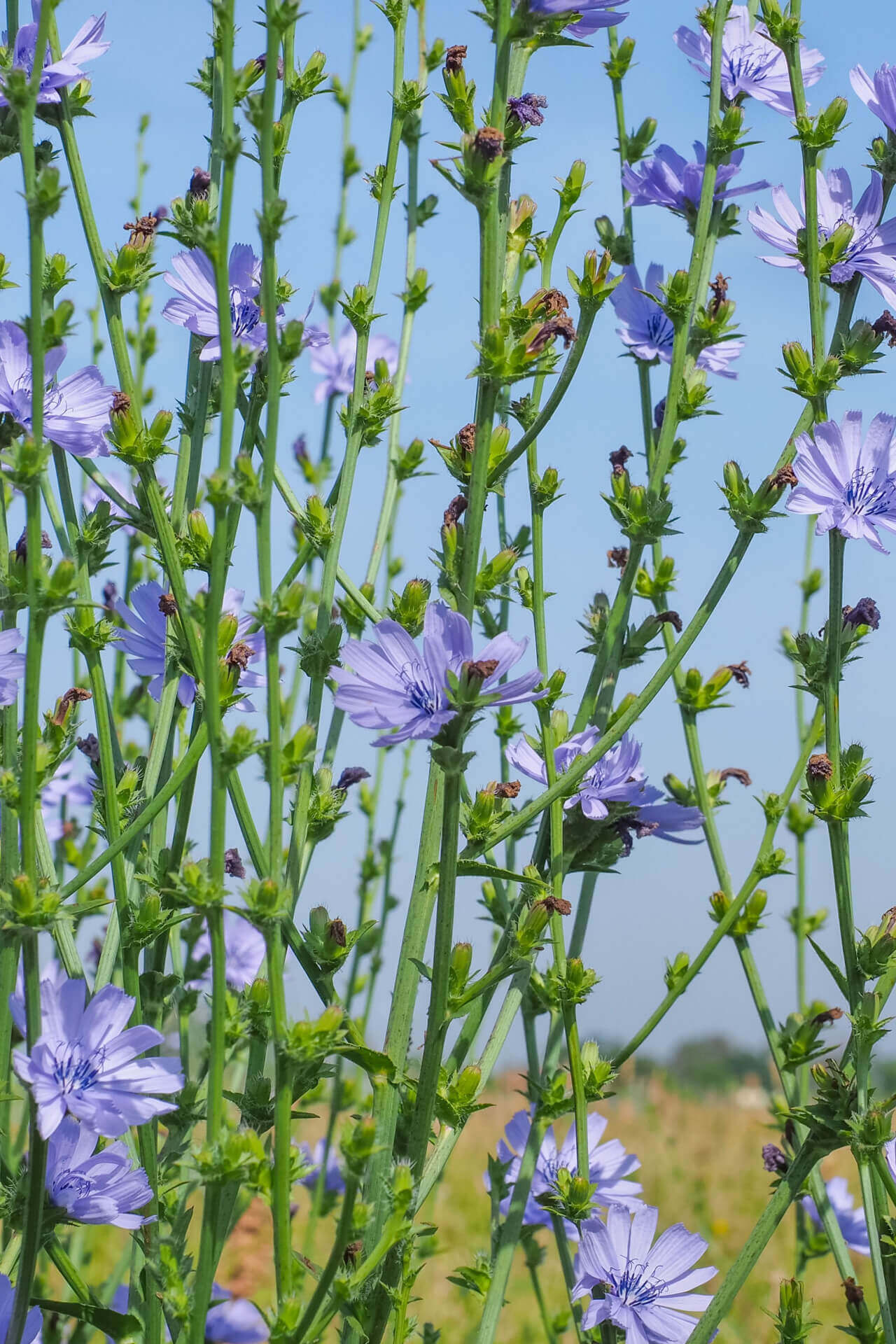Chicory Plants For Sale
Chicory is a perennial plant that everyone should grow in their garden. It's a hardy native that attracts many birds and other pollinators. It blooms very early in the morning, stays bloomed until lunchtime, and then quietly closes. It's a super unique perennial that thrives even in drought.
The leaves of this plant are lanceolate in shape and unlobed, and can grow to 1 ft in length at the base of the plant. The flowers of this plant are a unique shade of electric blue. They begin to bloom in early spring and will continue through autumn. Reaching a height of up to 5 ft, this plant is ideal for borders where it can be grown behind other shorter perennials.
Chicory Plant Facts Growing Tips
Family: Asteraceae
Hardiness Zones: 3–9
Light Requirement: Full sun
Water Needs: Moderate
Height: Up to 5 ft
Spread: 1 ft
Growth Rate: Moderate to fast
Bloom Time: Summer through autumn
Flower Color: Bright blue, sometimes white
Wildlife Value: Attractive to pollinators
There are many varieties of this plant some are cultivated for salad leaves, such as radicchio. Other varieties are grown for the “chicon”, the blanched bud of the plant, which is used for its slightly bitter flavor and crunchy texture in complex salads and other dishes. Even the roots are consumed. They can be dried, roasted, and ground into a delicious coffee substitute or food additive. Grow this plant in an edible garden or as a part of a beautiful perennial display. It can be enjoyed for its aesthetic beauty and elegance in the garden, and later added to your salad for a flavorful experience.
Chicory Care and Garden Benefits
Chicory thrives in moist, well-drained soil that receives full sun. While it is somewhat drought-tolerant, it grows most optimally in cool summer climates.
It is an easy plant to grow and has no regular pest or disease issues. It can be weedy in some areas, and it will intrude into disturbed locations of the yard; however, it can be controlled with regular attention to newly sprouted seedlings. This plant is a wonderful addition to the garden, and pollinators will be enticed by its flowers.
Choose Chicory for Your Garden
Entirely edible, electric blue flowers are attractive to pollinators. Plant this elegant, slender, towering perennial as a charming border addition. It will add to the visual appeal to any garden and will provide a yummy snack for you and yours. Shop for Chicory online at TN Nursery. For 68 years, we have served the landscaping industry and homeowners with specimen plants.
Exposure
Chicory grows best in full sun, requiring at least 6-8 hours of direct sunlight daily. While it can handle partial shade, optimal growth and flavor are achieved with ample sunlight.
Height at Maturity
Over 12"
Usage
Pollinator Plant
Shipped As
Bare-root
Ships
USPS
Planting Zones
3-9




